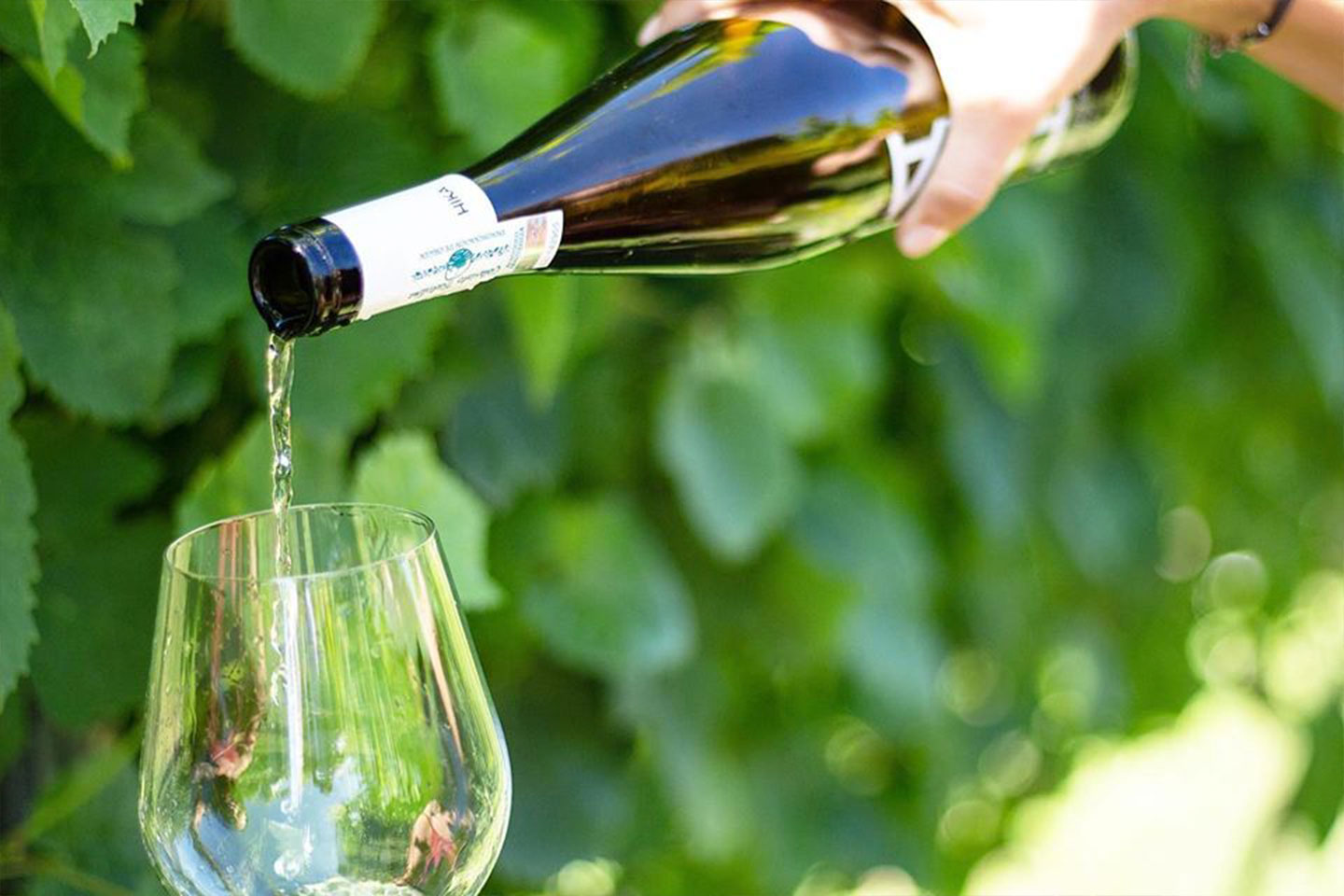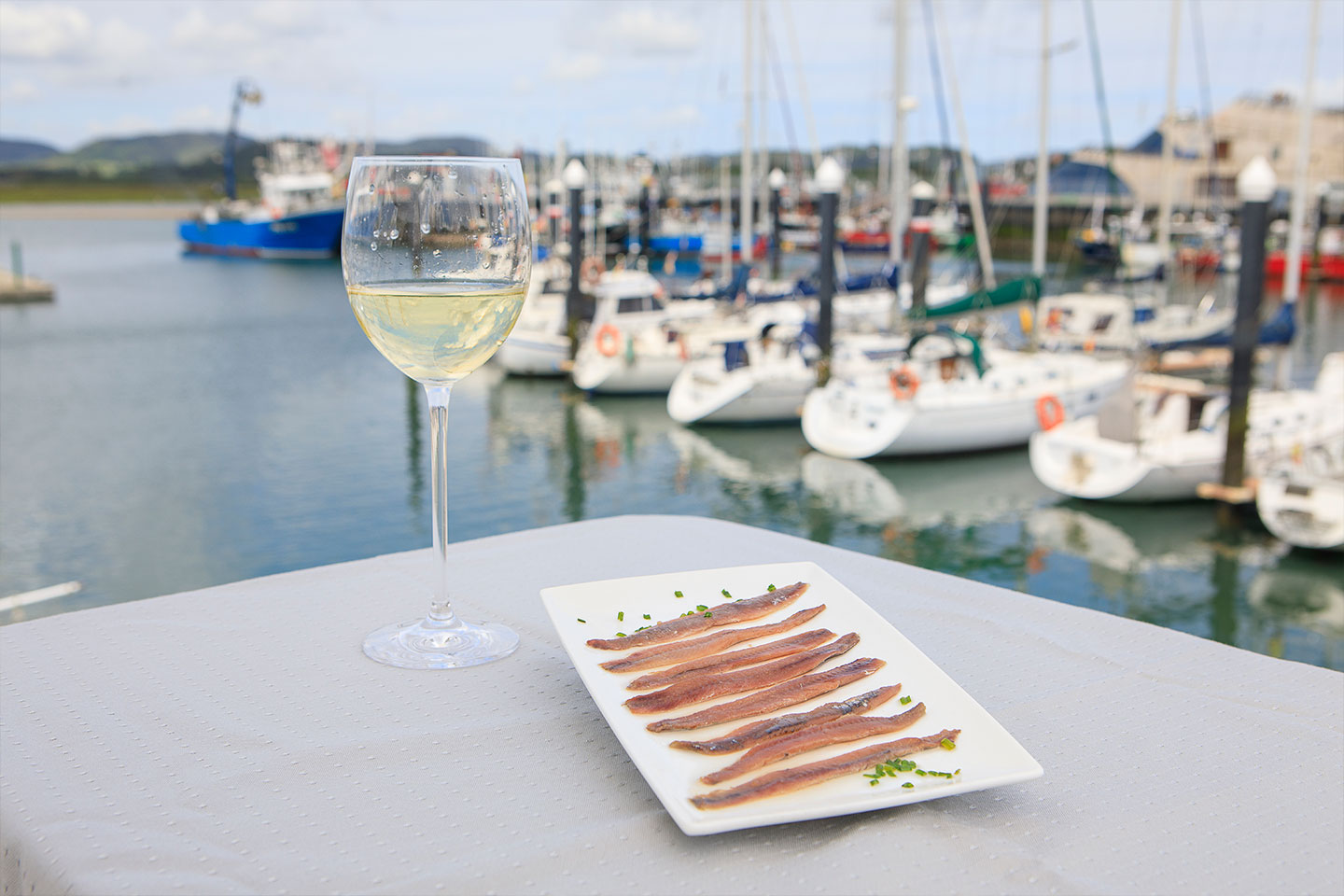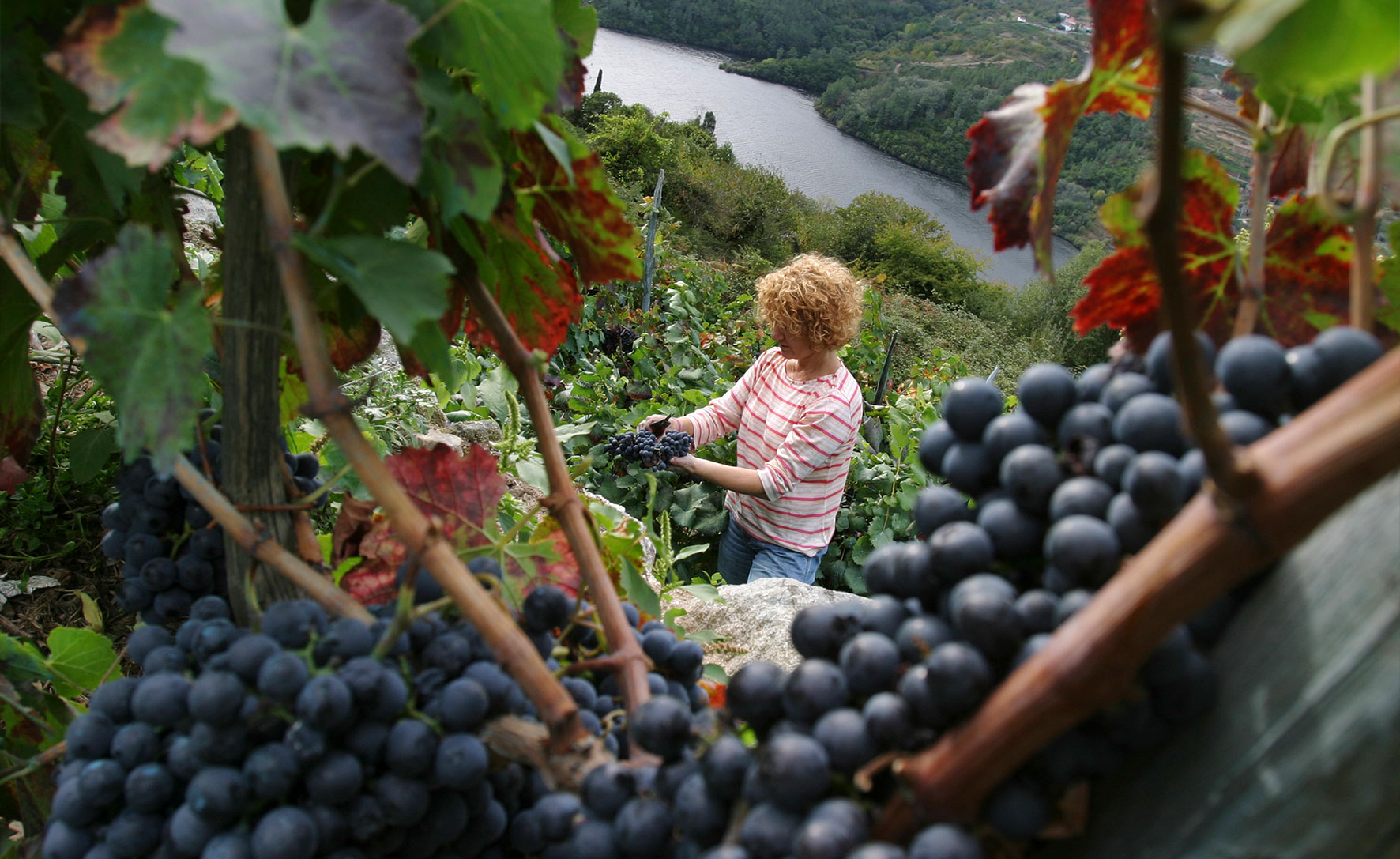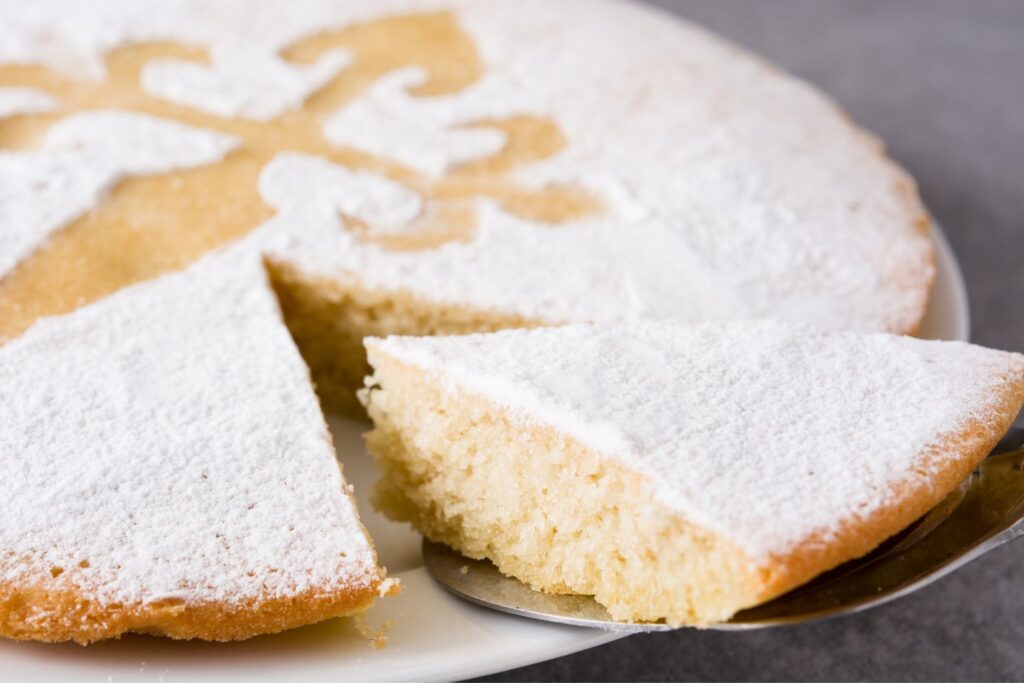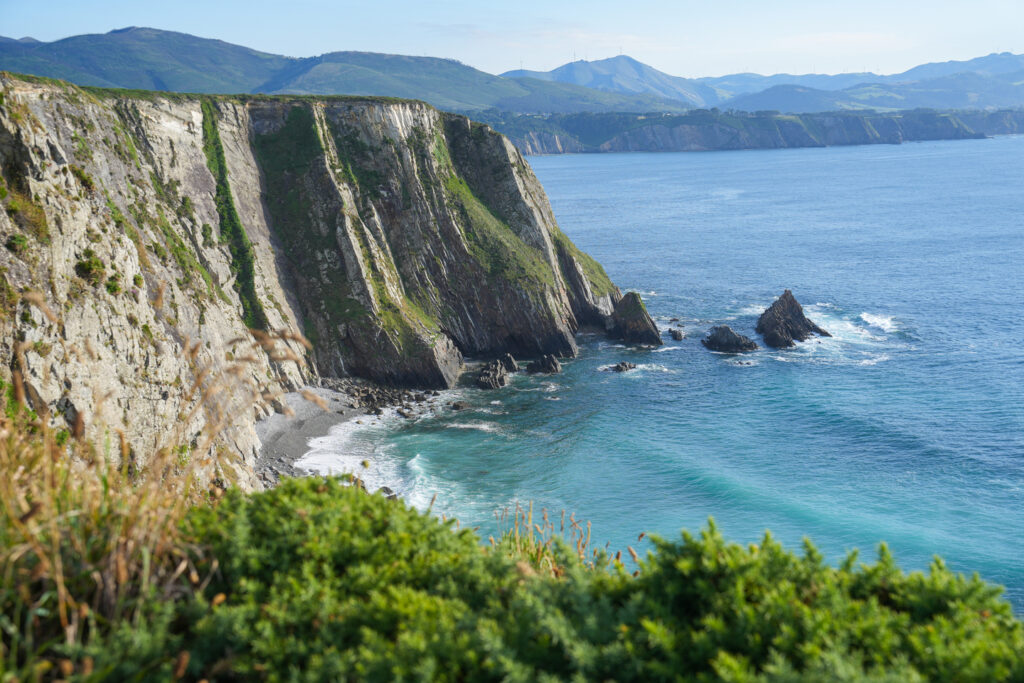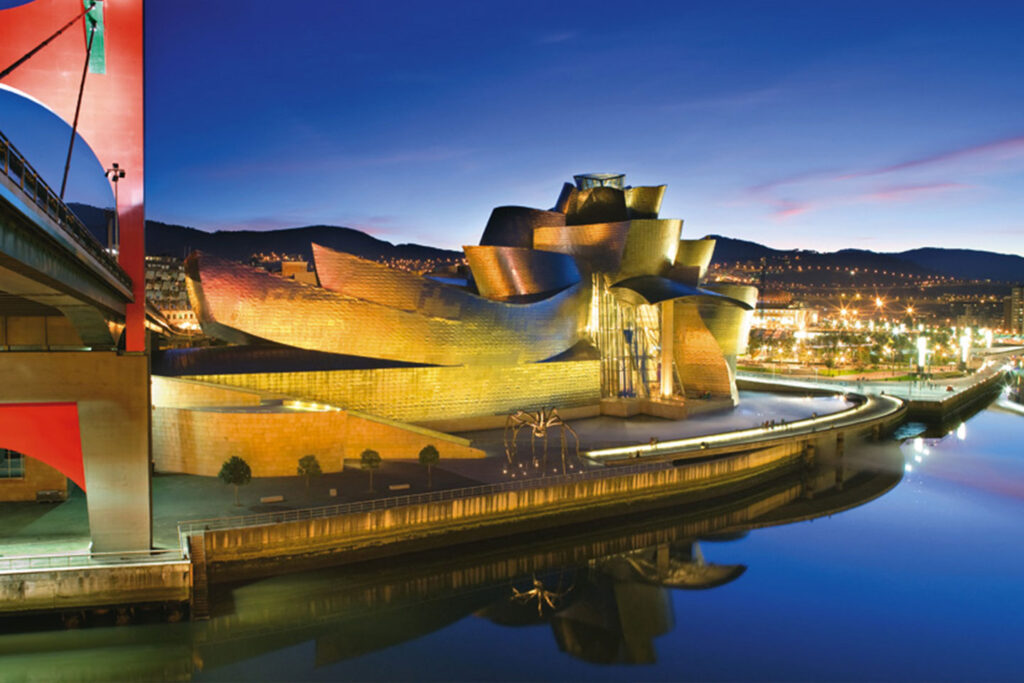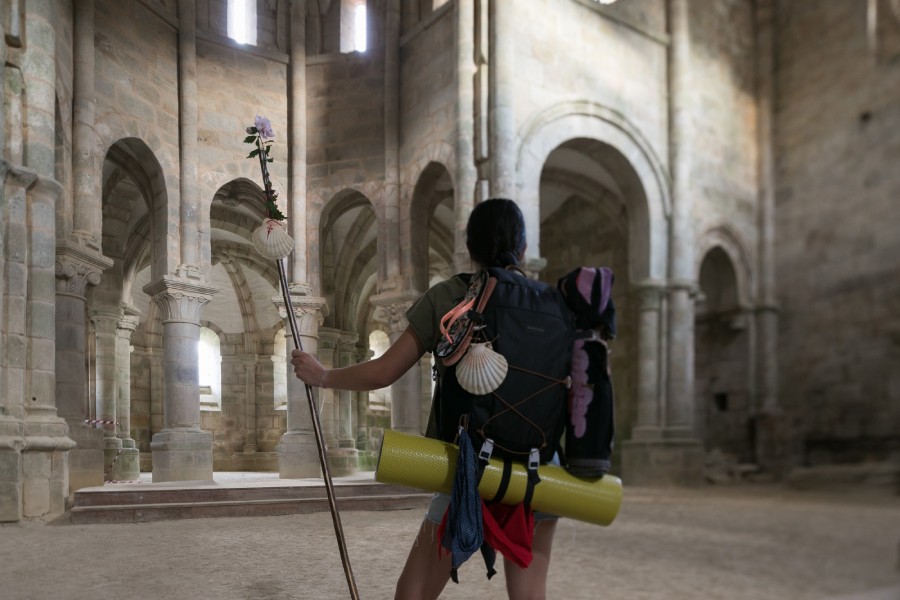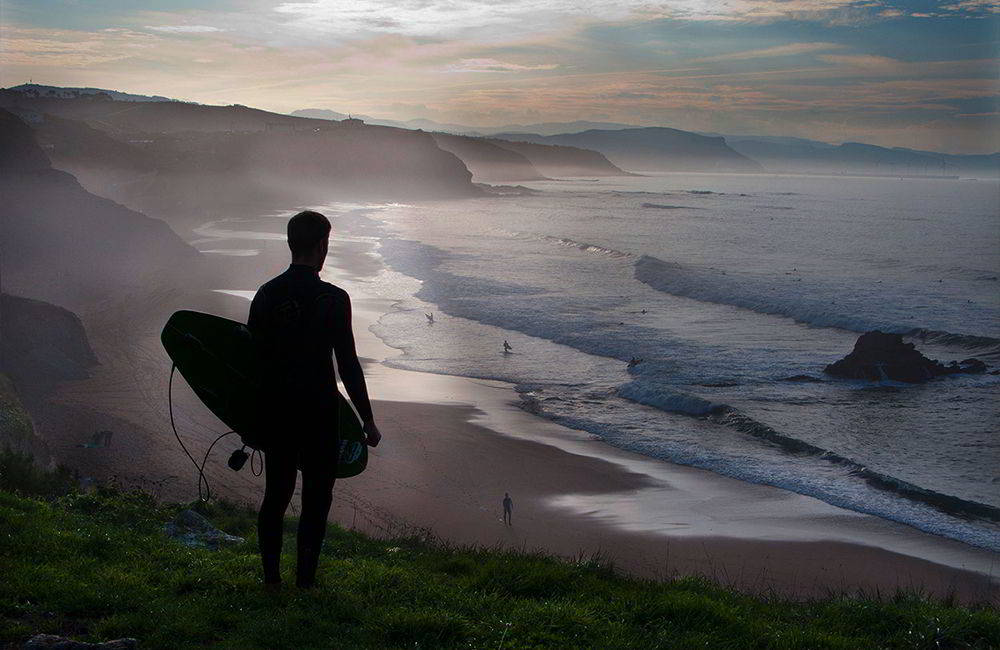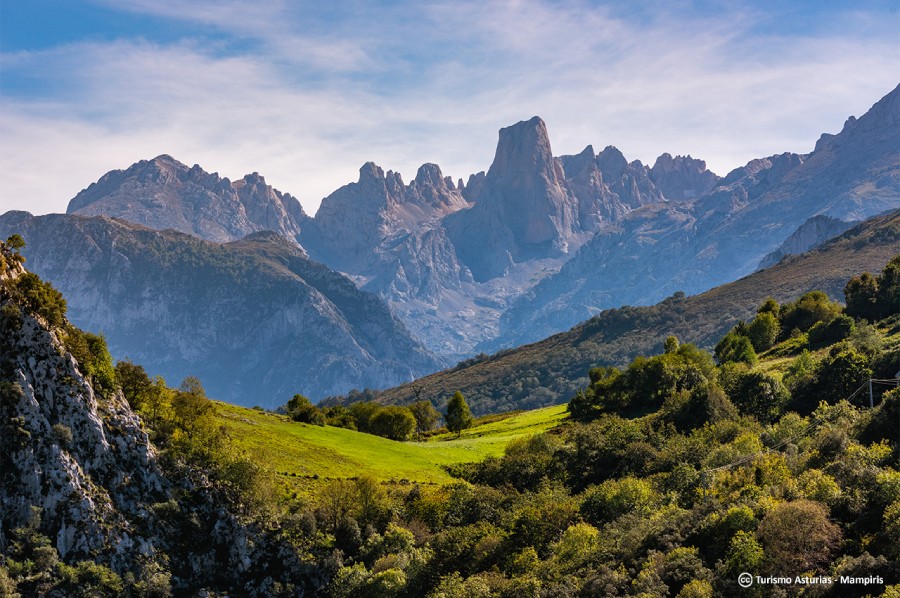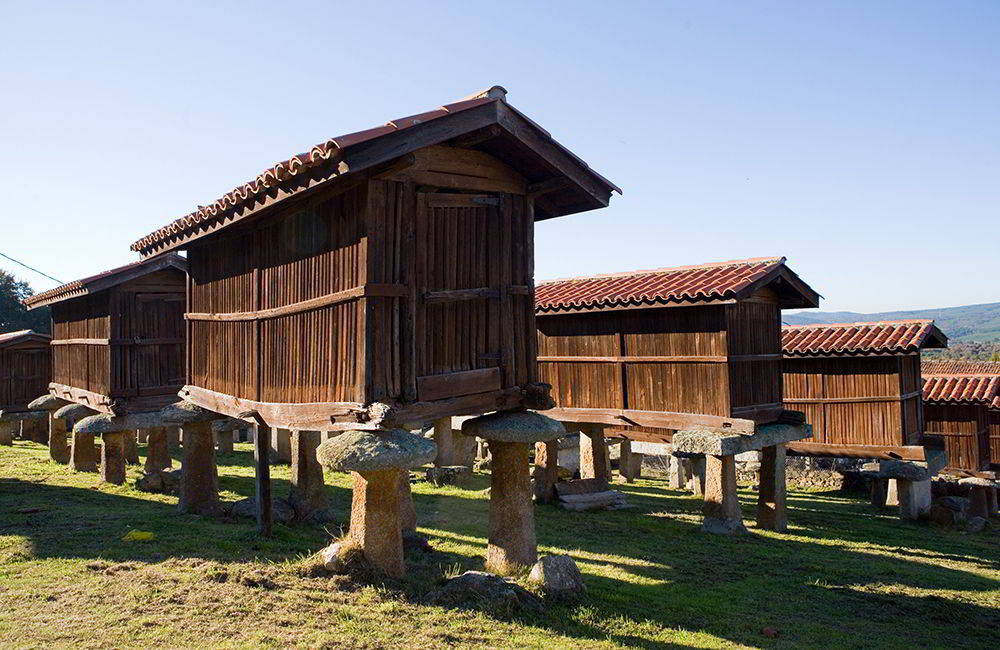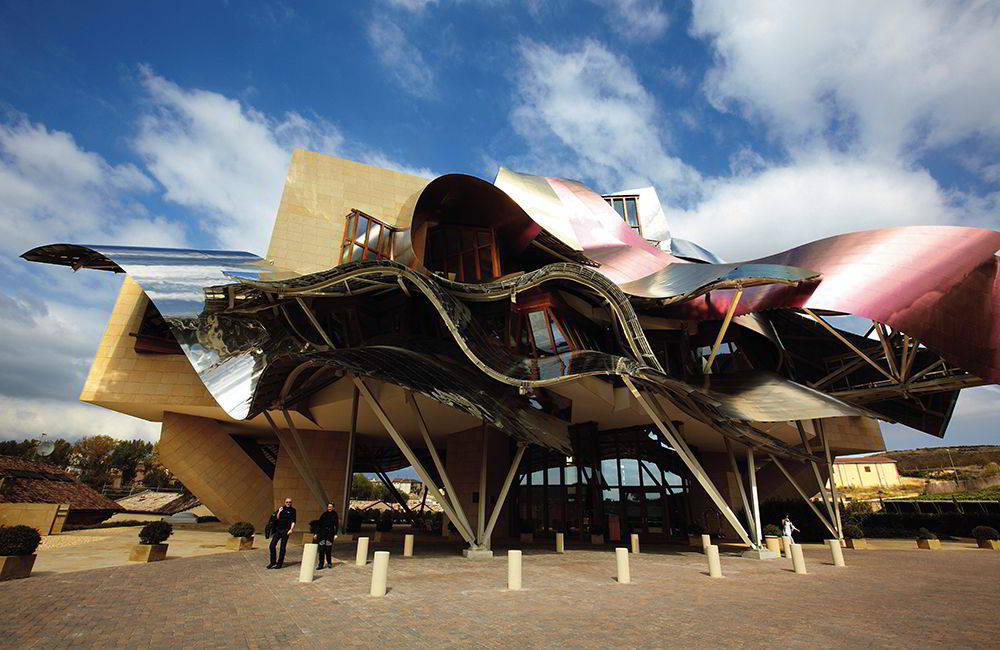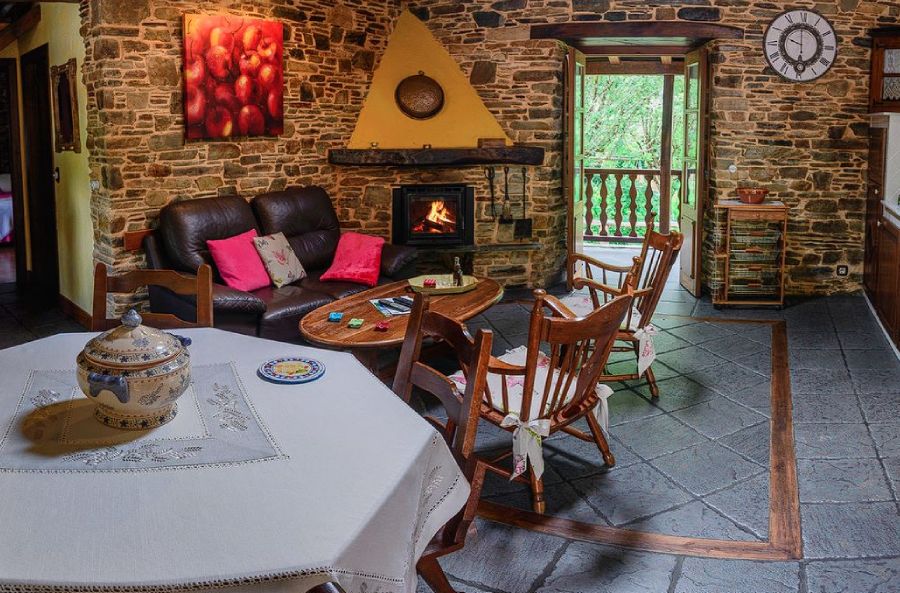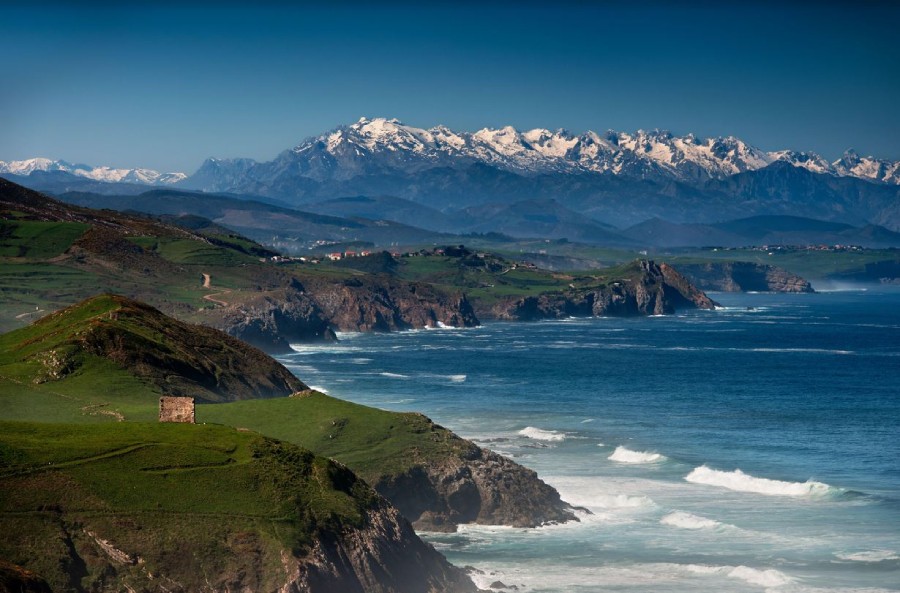Let’s be honest: in Green Spain, sometimes, it rains. The positive side of all this is that the landscape benefits from it and, above all, a series of crops that reach their maturity in the last quarter of the year: the vineyards and apple trees whose fruits are harvested in September and October. On the occasion of the harvest in Green Spain, we present three emblematic wines (with overwhelming personality) and a cider drink with a few centuries of history.
Protected Designation of Origin Bizkaiko Txakolina. Bizkaia (Basque Country)
What is txakoli?
Txakoli is a fresh white wine, slightly acidic, with an Atlantic character. It is mainly made from the native Hondarrabi Zuri grape variety and is one of the most representative products of the coastal Basque Country’s wine culture. In Bizkaia, txakoli has had the Bizkaiko Txakolina Designation of Origin since 1994, which guarantees its quality and connection with the land.
Why is the landscape so important in its production?
Although today txakoli vineyards are spread throughout Bizkaia (and through Gipuzkoa and Araba-Álava in their respective denominations of origin), originally the plants were cultivated on slopes close to the sea, hence their strong connection with the Cantabrian Sea and seafood cuisine. These Atlantic conditions give the wine its characteristic acidity, freshness, and minerality, favoring artisanal viticulture where every bunch is carefully tended.
What are the best places in the area to try it?
Txakoli is likely living one of the sweetest moments in its history, with many and varied wineries where classic producers coexist with new generations. This means that, practically, it is possible to travel through Bizkaia from winery to winery, tasting their products. Whichever route you take, it is important to visit Bakio, one of the Basque meccas of txakoli cultivation. This wine is also more than present in classic fish grills and, of course, in the pintxo bars throughout the territory.
What gastronomic dish do you recommend to pair it with?
A classic that never fails when pairing txakoli is grilled fish with the two classic kings of Basque seafood cuisine, sea bream and turbot, to which you can add seasonal fish (albacore in summer) or essentials that never fail, such as anchovies, cod, or hake.
PGI Costa de Cantabria Wine (Cantabria)
What is PGI Costa de Cantabria Wine?
It is one of the best-kept oenological secrets of northern Spain. These are wines produced in small wineries scattered along the coastal strip of Cantabria, from Castro Urdiales to Unquera, with vineyards reaching into interior valleys no higher than 600 meters. Their production is mainly white wines with just the right acidity, some citrus notes, and a saline touch that reflects their closeness to the sea.
Why is the landscape so important in its production?
The Atlantic climate of Green Spain (frequent rains, mild temperatures, and constant sea influence) creates a unique environment for vine cultivation. The vines, planted on terraces or slopes that crave southern orientation, face a demanding nature (much more demanding than, for example, that accompanying the vineyards along the Ebro), which gives them strong character. And most importantly, there is no better way to accompany Cantabrian gastronomy (so local, so genuine, so kilometer-zero) than with a wine with those same hallmarks: local, genuine, and kilometer-zero.
What are the best places in the area to try it?
Most Cantabrian restaurants include Costa de Cantabria wines on their wine lists, although you can also visit local wineries with guided tours for a complete experience. One should not overlook typical Cantabrian bars and taverns where you can enjoy the perfect pairing between wine, pinchos, or the famous servings of rabas or anchovies.
What gastronomic dish do you recommend to pair it with?
A white wine from this PGI pairs perfectly with Cantabrian Sea fish (and in Cantabria, hake or squid are a religion), seafood, seafood stews (we will never tire of recommending “marmitas”), or soft cheeses like the Cantabrian Cream Cheese with D.O.P.
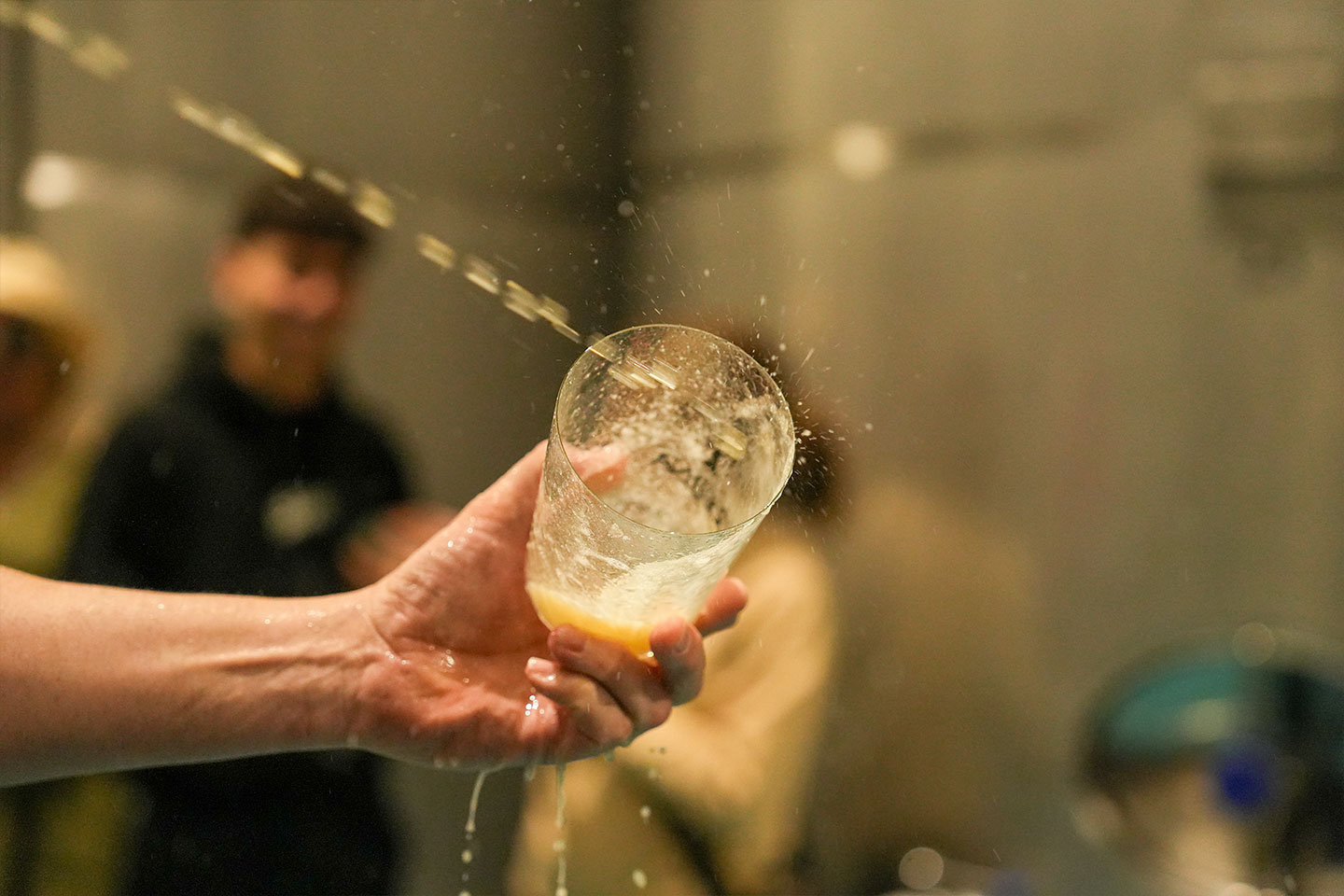
Protected Designation of Origin Asturias Cider (Asturias)
What is Asturias cider?
It is not easy to answer this question because Asturian cider transcends the limits of the concept of ‘drink’ to become an icon, an element of the Principality’s landscape, and a true hallmark of identity. Perhaps the simplest way to understand what Asturian cider is, is to visit a typical cider house (chigre) and spend a couple of hours there in an immersive experience. If that is not possible, we will summarize it very briefly: it is a slightly sparkling drink made from native apples, spontaneously fermented without added sugars or artificial gas, and consumed a few months after harvest. Its taste is fresh, slightly acidic, and with a dry point. Oh, very important: pouring (‘escanciar’) cider into the glass is part of a ritual that requires the expert hands of a cider pourer. And one last tip: only pour into the glass the cider that will be drunk immediately so that the drink is always fresh and sparkling!
Why is the landscape so important in its production?
The apple trees grow in the green Asturian meadows, exposed to the Atlantic climate: abundant rain, mild temperatures, and constant humidity. This environment, along with rich soils and agricultural tradition, directly influences the flavor of the apple and, therefore, the personality of the cider. Furthermore, the Asturian Cider Culture was declared Intangible Cultural Heritage of Humanity by UNESCO in 2024.
What are the best places in the area to try it?
To experience cider in all its splendor, the ideal plan is to visit a traditional cider house in places like Villaviciosa, Nava (home of the Cider Museum), or Gijón, where you will find the famous Cider Market in summer. You can also take a guided tour of cider cellars (llagares) where the production process is explained and, of course, tastings are offered. Visiting Villaviciosa in mid-October to celebrate the Apple Festival can also be an excellent idea.
What gastronomic dish do you recommend to pair it with?
Cider pairs wonderfully with dishes of traditional Asturian cuisine. A perfect option is cod omelet, chorizo in cider, fish and seafood, or even fabada, as its acidity cleanses the palate and balances the richness of the dish. It can also be enjoyed with Asturian cheeses such as Cabrales or Afuega’l Pitu.
Protected Designation of Origin Ribeira Sacra. Lugo and Ourense (Galicia)
What is Ribeira Sacra wine?
Surely the best way to answer this question is to show a photograph of the vineyards carpeting the canyons of the Sil River and thus easily understand the wine treasure (or miracle) of the Ribeira Sacra. Flying over the dizzying terraces overlooking the Sil and Miño rivers makes it clear why the viticulture of the area is called “heroic viticulture.”
Why is the landscape so important in its production?
Because in the Ribeira Sacra, the landscape conditions everything: cultivation, harvest, the fruit… Few wines can claim so strongly to be a pure expression of the landscape and human effort. The vineyards grow on terraces carved into slopes with up to 80% gradient, where manual labor is essential. The Atlantic climate, softened by the river canyons, along with slate and granite soils, gives the wine a unique identity.
What are the best places in the area to try it?
You can enjoy Ribeira Sacra wine in many wineries (adegas) in the area, many of which offer tastings with spectacular views. You can also try them in local restaurants and bars or, why not, in some of the exceptional spots that Ribeira Sacra offers, such as the viewpoint of Os Balcóns de Madrid (after purchasing a bottle and glasses at an emblematic winery) with views of the Sil River.
What gastronomic dish do you recommend to pair it with?
A young red wine, such as Mencía, pairs wonderfully with Galician beef on the grill, empanada de zorza, or even pulpo a feira. If you prefer a white, try it with Galician cheeses, seafood, or Sil River trout. Yes, in Ribeira Sacra, there is also that magical phenomenon where you do not know whether the food was created to accompany the wine or the wine was born to enhance each dish. The pairing between the two is perfect.
